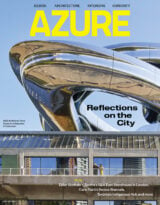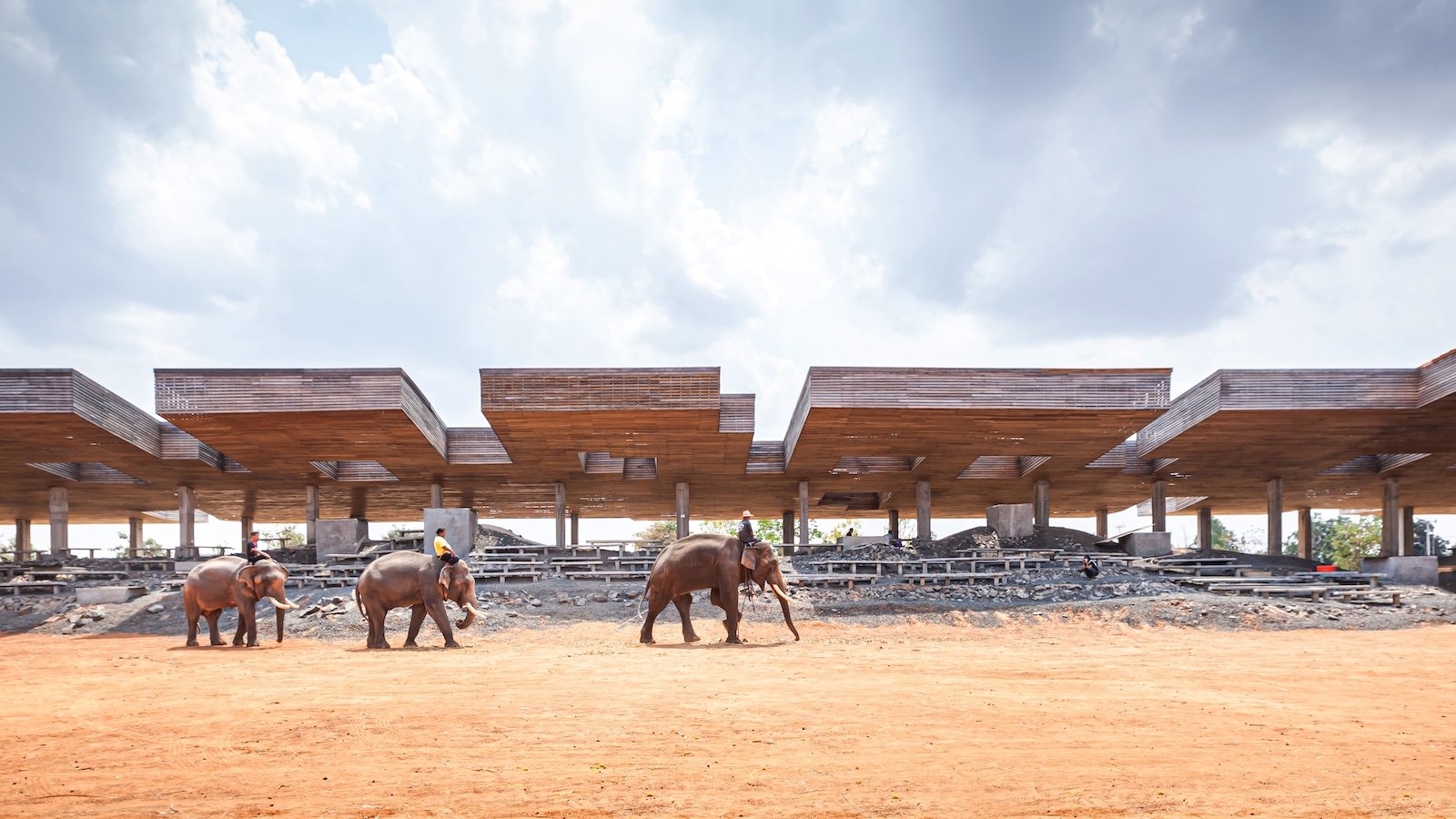
Boonserm Premthada was a child in Bangkok when he learned the basics of making — using old newspapers to build toys when his family couldn’t afford them. He describes the place where he grew up as a slum; it was within this survival-oriented environment that he discovered imagination’s power to break barriers. “My approach to my practice doesn’t come from theory; it comes from the soul,” Premthada tells me.
There’s both magic and pragmatism in the Thai architect’s work. He defines being “human” not in terms of taxonomy but in the ability to relate more generously to non-human life. He grounds himself in a world where elephants and people live side by side, and in rural sites that sit forgotten on the margins. To him, sustainability must extend beyond green metrics to consider materials in terms of expanded life cycles — measured also by the stimulation of local economies.
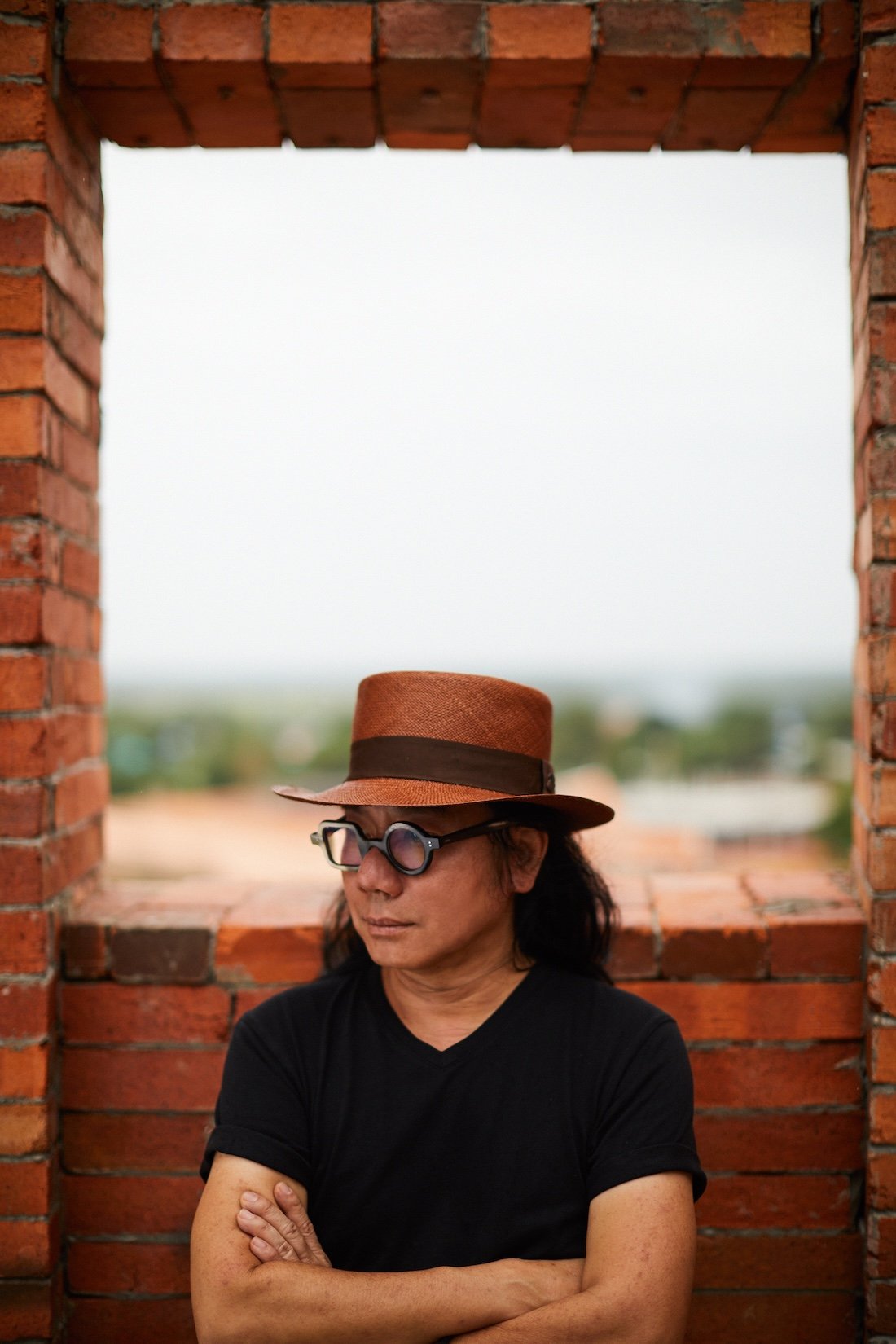
The son of a carpenter, Premthada developed an intimate familiarity with traditional materials long before he became an architect and founded Bangkok Project Studio in 2003. Wood taught him precision, as two pieces could not be rejoined after a cutting error. Bricks, central to his Kantana Institute for Film and Animation, he describes as “alive.” He was 45 when his first buildings — Code House and Kantana — were completed in 2011. And with both the Milan Triennale and Venice Biennale to his credit in the past year, his vision is expanding far beyond his humble beginnings.
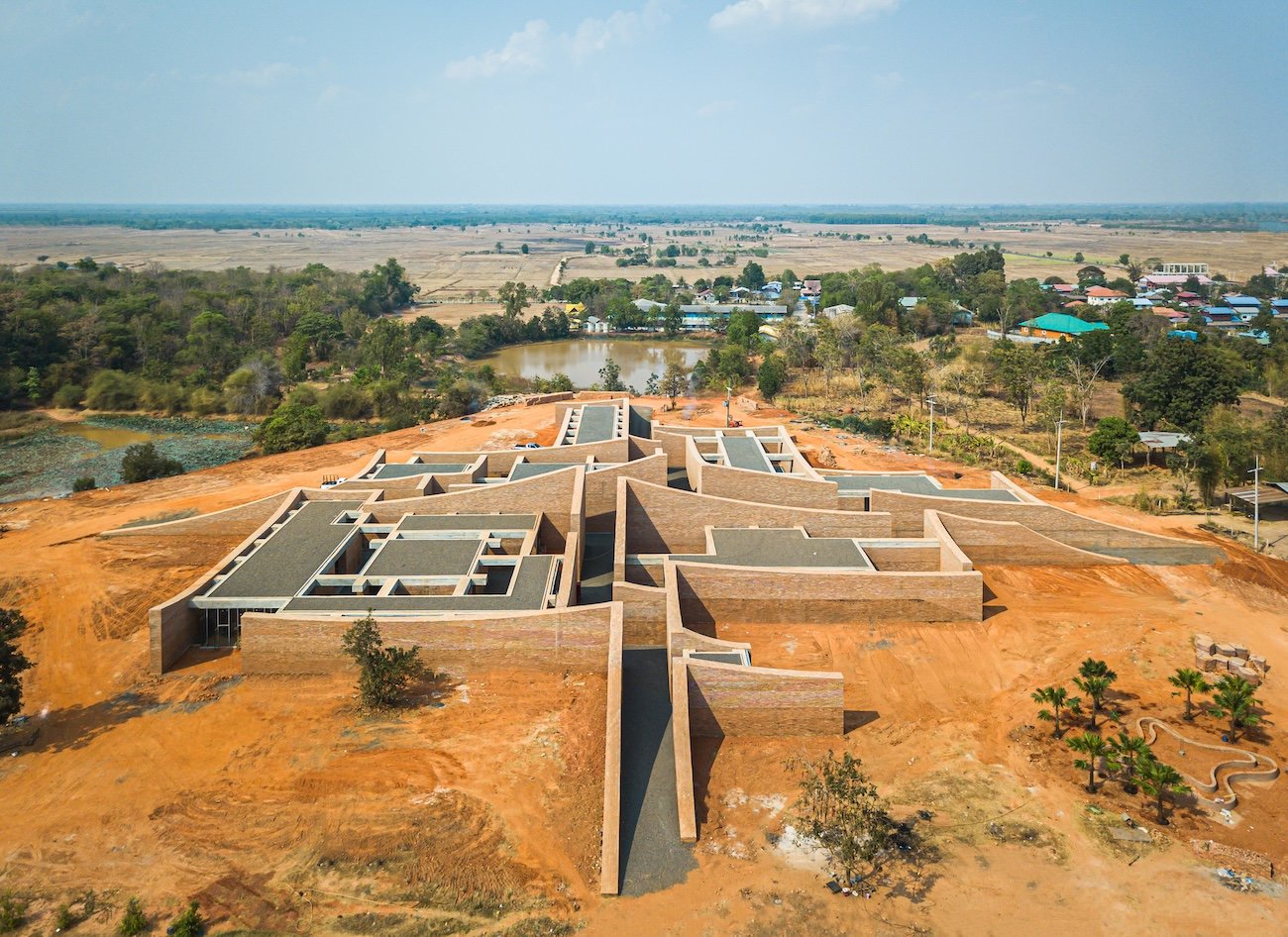
In Elephant World, you explore the relationship between humans and elephants. I thought about the carabao, or water buffalo, which is deeply symbolic in the Philippines. How do animal–human relationships shape your approach to architecture?
- Boonserm Premthada
In parts of Thailand, humans and elephants have lived together for over four hundred years — sometimes even under the same roof. The elephant isn’t just an animal, but family, even something like a god. Thai culture has long recognized this. With their heightened senses of hearing and smell, elephants remind us to expand our own awareness.
The elephant villages of the Kui in Northeastern Thailand have been suffering food shortages as forests were destroyed and land dried up. The Thai government began an elephant welfare initiative after the animals and their keepers were migrating in large numbers from villages to the city. The government initiative aimed to return elephants to their homeland — preserving culture, reviving forests, and building sustainable economies. This became the foundation for Elephant World, which began in 2015 and finished in 2020. This is a very new challenge in architecture, designing for both the animal and the human, since normally we design just for humans. Elephant World shows what it means to build architecture that is non-human-centric.
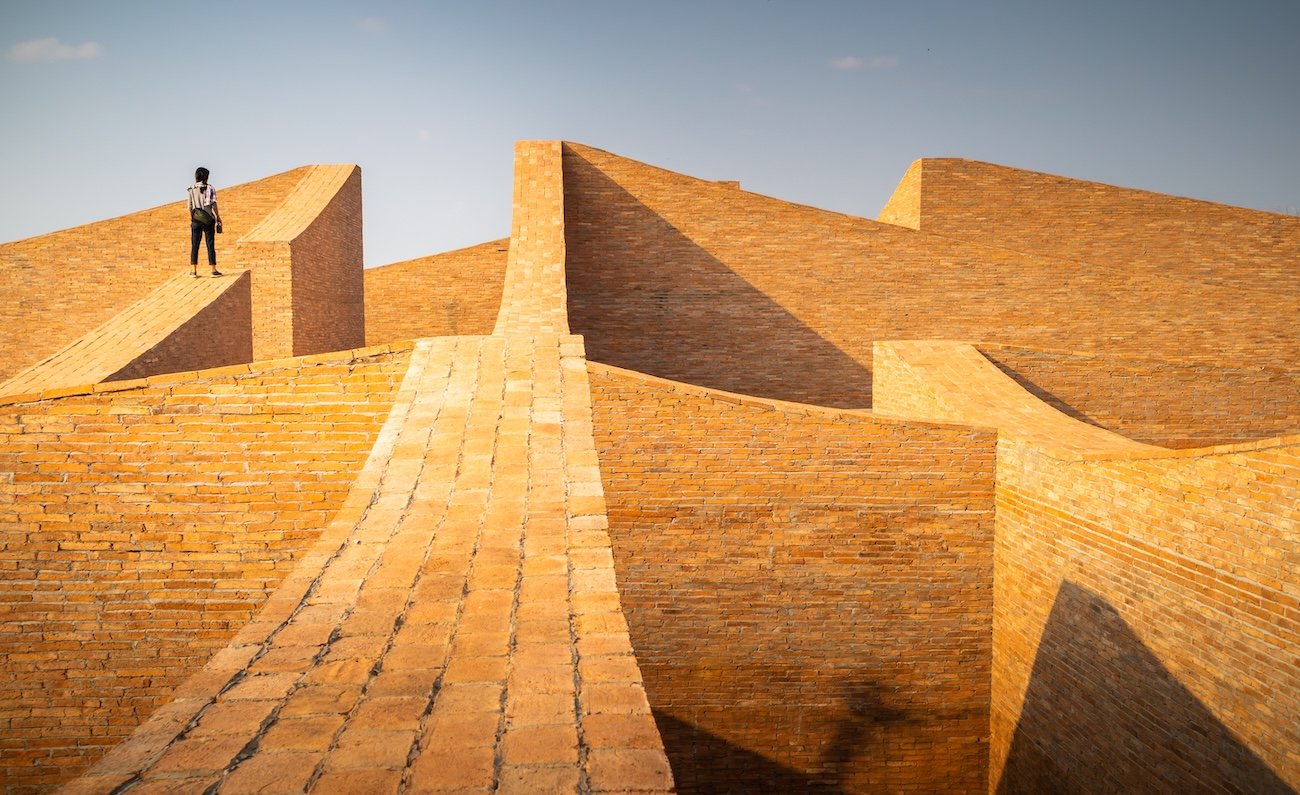
Your Venice Biennale project, Elephant Chapel, grew out of Elephant World. How did the idea evolve?
After finishing Elephant World, in 2021, I began witnessing elephant populations grow in the villages, and their dung was everywhere — on the roads, outside houses, all around town. I thought, How can I use it? Dung is usually good as fertilizer, but I began experimenting with it as construction material, mixing it with soil, cement, stucco, tree bark and leaves, and pigments from plants to make bricks.
We first used these elephant dung bricks at the Île-de-France Architecture and Landscape Biennial in 2022, and later at the Academy of Art in London, with waste from Colchester Zoo and manpower from local volunteers. The elephant dung became an ingredient we could find in London. The method depends on the place and scale of the project.
For the 2025 Venice Biennale, I began thinking about the problems elephants face with climate change. I told the elephant keepers: Collect the dung, sell it to the factory, and use the money to buy or plant food for the elephants. At that time, I was just thinking about how I could help the elephants survive.
The exhibition was answering the prompt, What is intelligence? For me, it’s how animal and human intelligence come together and can inspire respect for one another. In Venice, there are many churches and chapels. What would happen if we had a chapel for animals? This became Elephant Chapel.
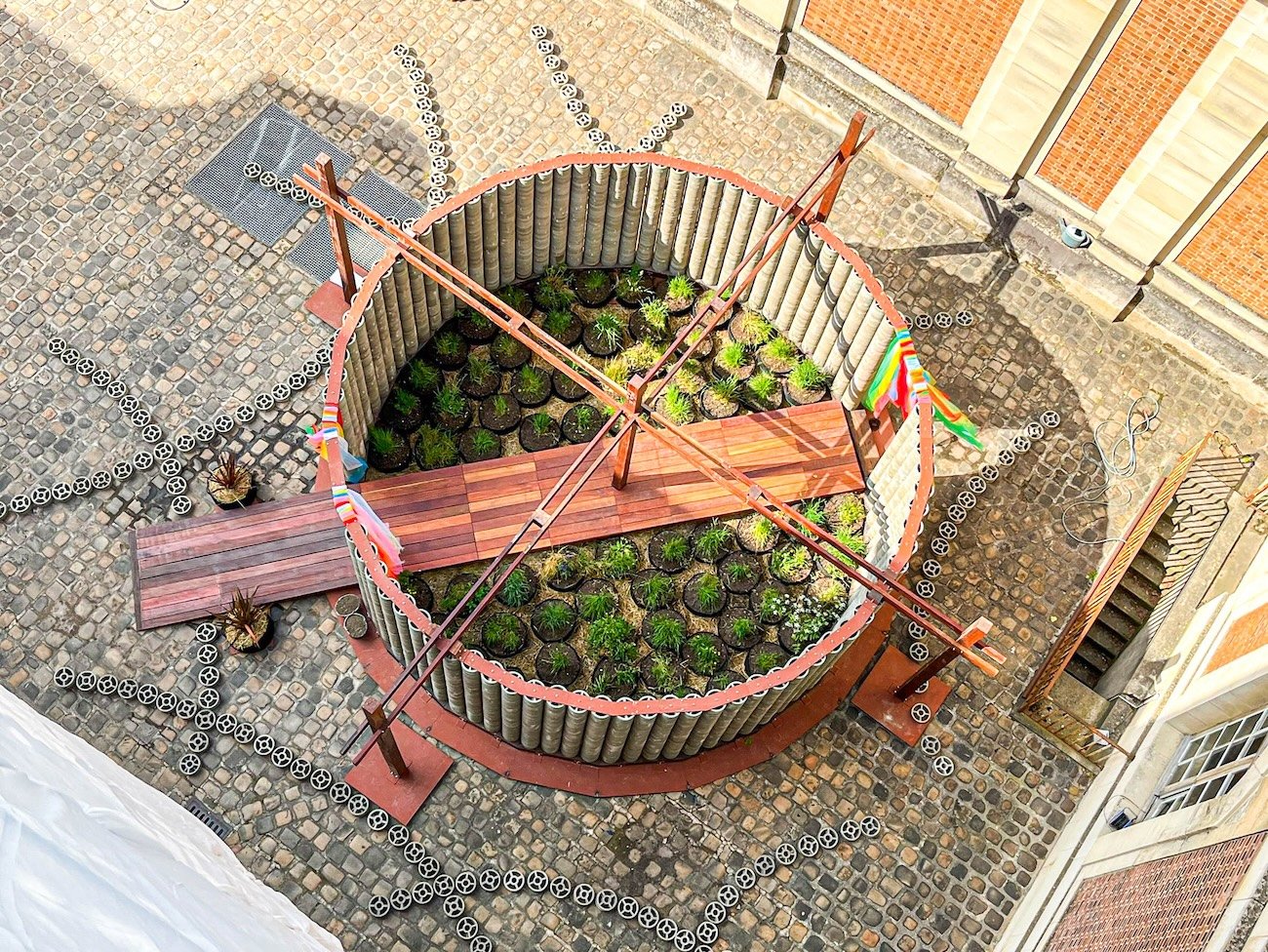
Your experiments with elephant dung bricks and paper propose a localized approach to sustainability. Do you see these methods being applied more widely?
My intention is not to scale up but to apply concrete ideas. I’m interested in life-cycle materials and imagining architecture with life-cycle materials. Not recycled, and not upcycled, because recycling and upcycling are not related to the whole life cycle. They are more concerned with a material’s afterlife. To me, scaling up is about holistic thinking.
I think of my mother and grandmother, who came from Northeast Thailand. In my grand- mother’s village, there was no electric power and no public water. For food, there was duck and chicken. If you wanted clothes, you’d have to find silkworms that produce silk fibre. I experienced this very basic life for three months during the summer every year visiting my grandmother. When I look back to that time, I realize I learned a lot about the meaning of sustainability. I didn’t know the term and it wasn’t in my vocabulary yet, but I think everyone should go back to the basics of living and then apply what they’ve learned.
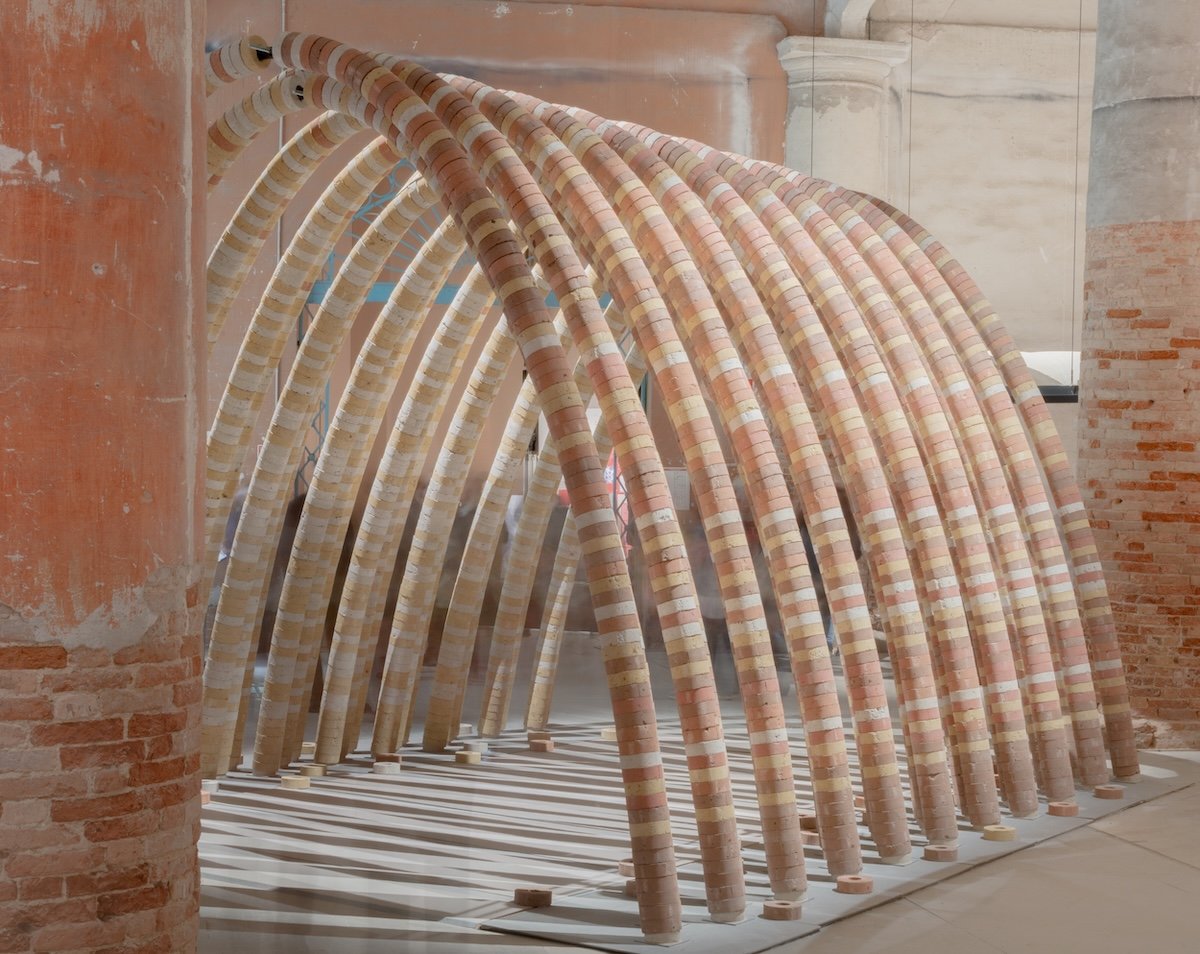
I also see your work addressing social sustainability in the context of Southeast Asia, where rural to urban migration has put pres- sure on cities like Bangkok. Much of your work is in rural Thailand, not Bangkok. Why focus on these places?
I am based in Bangkok but I have no work in Bangkok! I think Bangkok is complete — it’s perfect. Many of my projects are situated in the middle of nowhere. I like that, because I’m interested in what’s abandoned. I focus on people with a lack of opportunities, because this is where my background lies. I never forget my background and where I come from. In abandoned or desolate areas, there is a need for architecture to build the place up, and the people who live there.
Architecture cannot exist alone. It has to be about cooperating together, life, local materials, resources — combining this together is the way. In rural contexts, I’m always thinking about how local people need to survive.
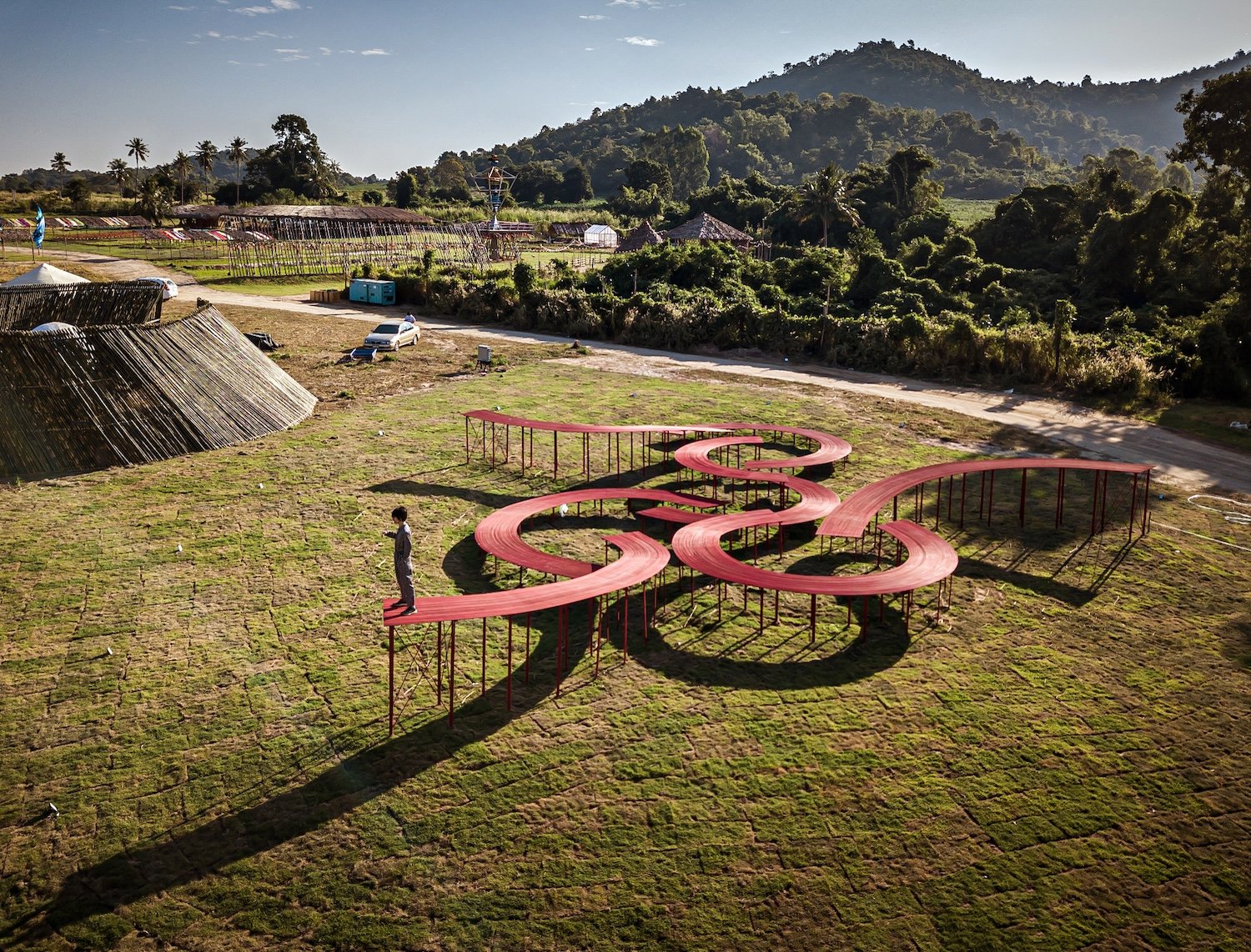
As a professor, what do you want the next generation of architects to carry forward into the future?
As an educator, people ask me: Boonserm, how do you teach your students? I tell them that the only thing I want to teach the younger generations is how to be human. You can be a good student of architecture and design, but if you are not a good human, and you’re not listening, you won’t have a reason to build something. The work has no soul.
I ask my students, Do you think it makes sense? When the world has many conflicts going on, you need to make something that makes sense. If it makes sense, you can do it. Whether in Thailand or the rest of the world, there is no architecture that is better than the other. No one is better than another. Everyone is important. This is the lesson I teach to my students, and to the young architects of the world — I think this is the future we need.
There are many theories offered at the school of architecture. I want to show another way of think- ing, one where the human is not at the centre. I want to show how we can live together. This is my philosophy from my childhood until now.
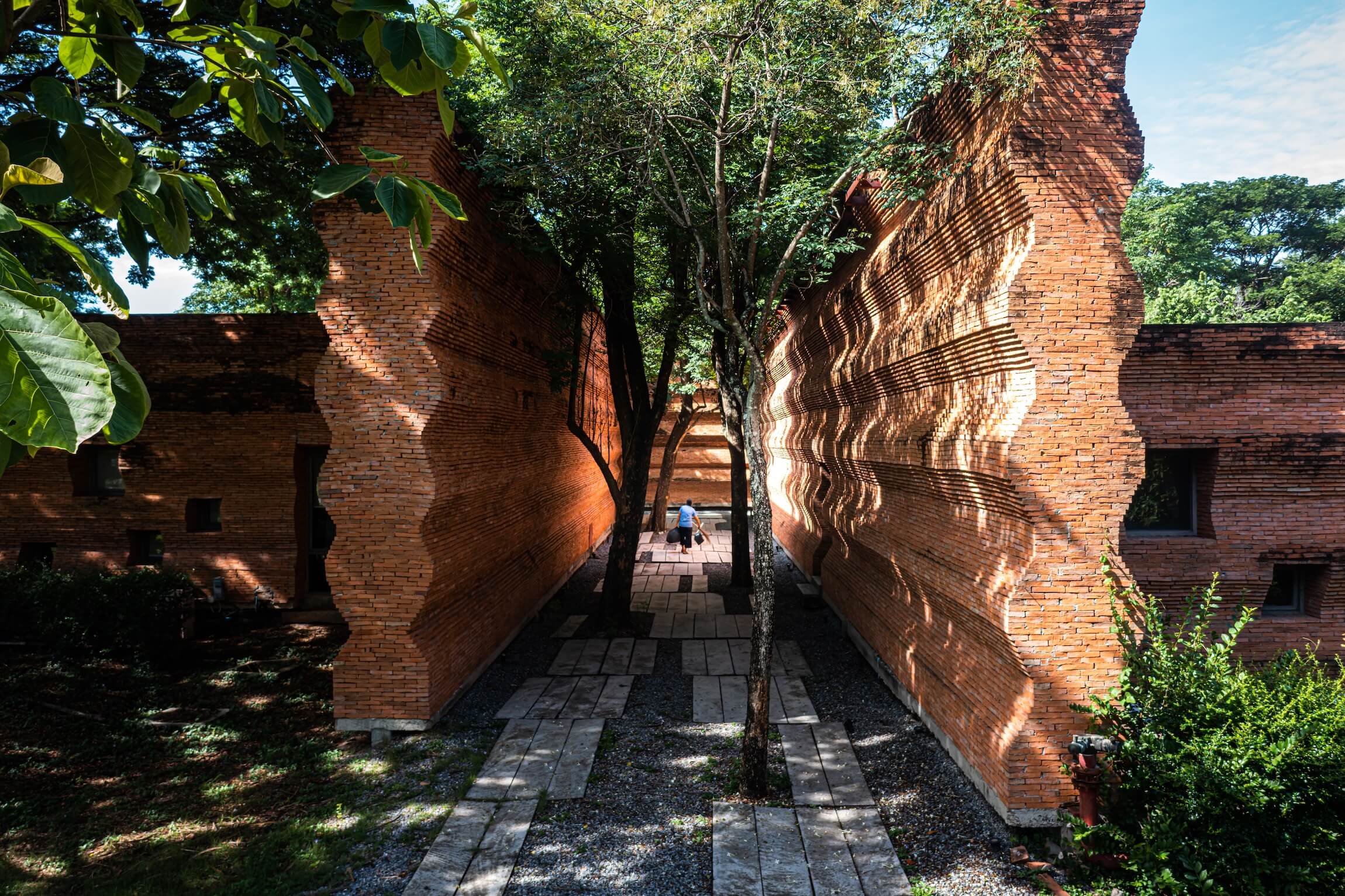
Architecture for Elephants: A Q&A With Boonserm Premthada
As the Bangkok-based visionary behind the
Elephant World project, Boonserm Premthada seeks to build an architecture that embraces the wild and breathes new life into natural materials.
